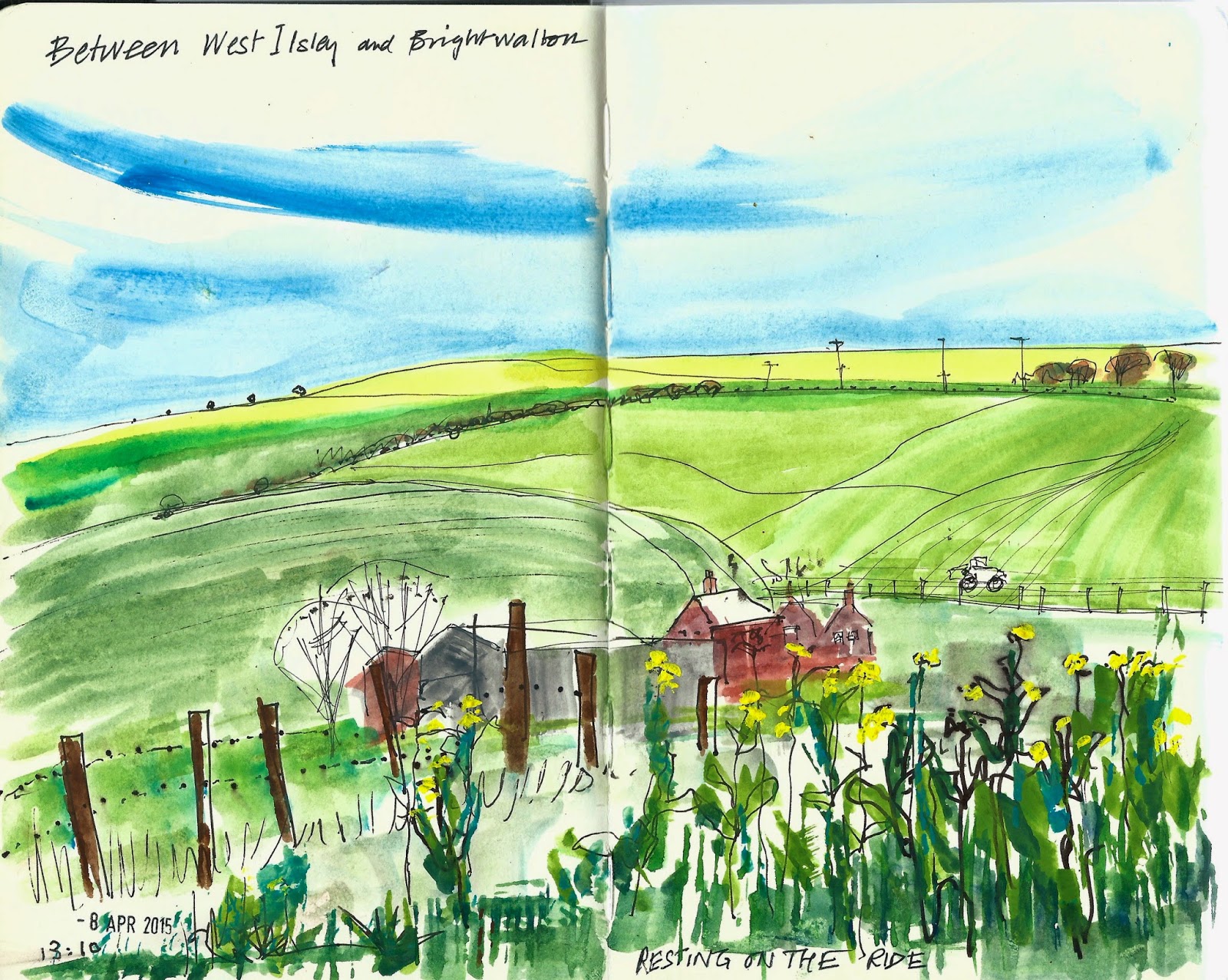For the last 20 or so years I’ve enjoyed many cycling
jaunts with my friend and former Judge Ricardo. The other week saw us in the
Lambourne area. Lambourne village is the epicenter of fantastic downland area bi-sected
by the M4 west of Reading.
Tiny villages nestle in rich pastures providing fodder
to breed racehorses.
It was a lovely day. After an uphill road out of West Ilsley
village and we rested, for me to make a drawing and for Ricardo to take a small
nap.
 |
| West Berkshire Downland |
After the ride doing a little bit of research I
realise that we were cycling through the battlefields.
The name Ilsley appears to be derived from Hilde-Laege
meaning 'Place of Conflict'. One of the villages (West or East) bearing this
name is thought to be the site of the Battle of Ashdown (AD 871), which is
known to have taken place on the Downs. It was here that Prince (later King)
Alfred won his magnificent victory over the invading Danish armies.
Source: http://www.berkshirehistory.com/villages/westilsley.html
Source: http://www.berkshirehistory.com/villages/westilsley.html
Thinking about this, it is not difficult to imagine
the military hoards charging down these now peaceful slopes.



